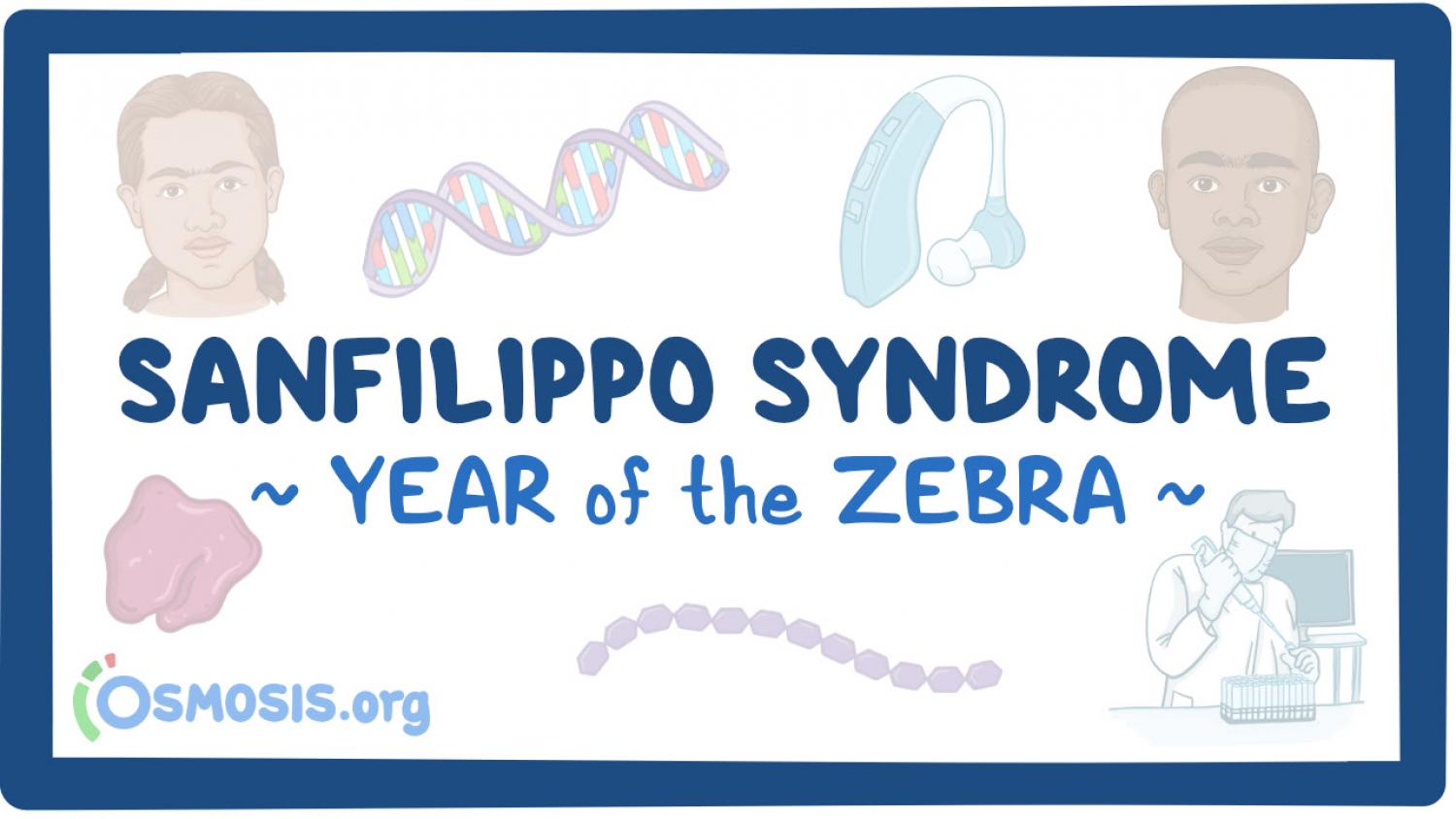
Rare Disease Education: Sanfilippo Syndrome
Editor: Kelsey LaFayette, DNP, RN, FNP-C
"When you hear hoofbeats, think of horses, not zebras,” is a common saying in medical education that means you should think of common conditions first, instead of rare ones, in making a diagnosis. “Rare” is a relative term though and about 7,000 rare, or "zebra," conditions affect more than 350 million individuals worldwide. Although these conditions collectively affect an enormous number of people, each of these conditions individually is rare enough that it can be difficult to secure the resources to study them and to develop treatments and cures. Likewise, awareness of rare conditions may be low and health care professionals may not be familiar with their signs and symptoms making it more difficult to reach a correct diagnosis and provide effective treatments.
To increase knowledge about rare conditions, Osmosis and the National Organization for Rare Diseases (NORD) have collaborated on an initiative to bring education and awareness to the public. We are excited to be a part of this initiative because we believe everyone deserves quality health care, no matter how rare their condition.
Zebra of the Week: Sanfilippo Syndrome
Watching children grow and reach developmental milestones such as first steps and first words can be some of a parent’s most cherished memories. The joy of seeing children build themselves up and grow is unique. Unfortunately, families affected by Sanfilippo Syndrome must endure a progressive reversal and decline of affected children.
Sanfilippo Syndrome, also known as mucopolysaccharidosis type III, is a rare genetic condition that is classified as a type of childhood dementia. It is caused by the lack of an enzyme that normally breaks down and recycles a large, complex sugar molecule called “heparan sulfate”, leading to its accumulation in the central nervous system.
Children with Sanfilippo Syndrome usually appear healthy at birth, but developmental delay typically becomes evident by age 2-5 years. Then, children can start to lose their intellectual functions, especially speech, followed by motor function. Some other symptoms that may occur include coarse hair, excess hair growth, slightly coarse facial features, and seizures among others. Unfortunately, children with Sanfilippo Syndrome live on average to be between 15 and 20 years old.
Meet Ben and Jack Negele, twins that are different
Just a few years after getting married, David and Amber Negele got lucky: they were having twins! Born during the uncertain times of the COVID-19 pandemic, the parents describe the twins Ben and Jack as completely different: one the wild child with infinite energy, the other content for relaxation and lots of love. At around one year of age, unequal development raised alarms that Jack may be in need of medical evaluation.
After countless specialist visits and perseverance through a lack of diagnosis despite seeking help, Jack was diagnosed with Sanfilippo Syndrome. Watch the Negele family tell their story in the video above.
Organization Taking Strides
In 2013, Glenn and Cara O’Neill's daughter who loved to run and sing, Eliza, began to lag behind in her developmental milestones. Initially diagnosed with Autism, they later discovered she had Sanfilippo Syndrome. Devastated but determined, the O’Neills turned hope into action and established the Cure Sanfilippo Foundation.
Their aim wasn't solely for their daughter's benefit; they wished to find a cure for every child affected by the syndrome and dreamt of a world where no child or parent suffers because of this disease.
To this end, the foundation funds research to find treatments or cures for Sanfilippo Syndrome. To date, they have committed over $8.5 million to more than 30 scientific research projects and clinical trials, all while promoting a collaborative approach to research problems. They also offer support to families affected by Sanfilippo Syndrome by providing updated resources, counsel, community support, and grassroots fundraising tools.
More Information on Sanfilippo Syndrome
